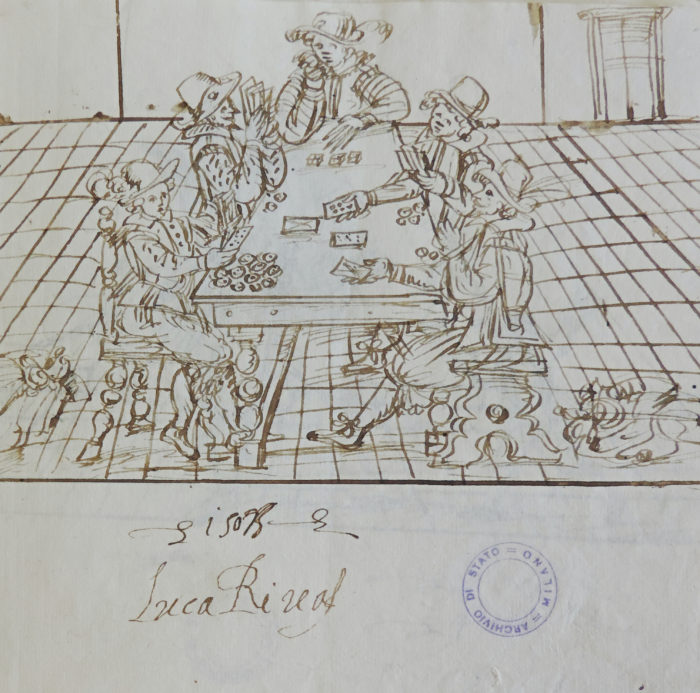
Luca Riva, Gambling Scene, brown-ink on paper, 1624. Archivio di Stato, Milan. (Photo Credit: Archivio di Stato di Milano).
This drawing by Luca Riva illustrates one of his bequests to his family members. It shows a group of five men seated at a large dining table, engaged in a game of cards. It is clear that there is a financial element to their game, as one can see through the round tokens accumulated by a few of the figures. One of these figures is Giulio Riva, Luca’s nephew. Riva stated in his testament that Giulio “inherits not more than 150 lire as he spends most of his time gambling”. This not only indicates a dark sense of humour in Riva, but also a sense of morality. Riva’s rendering of a Milanese gambling house follows in the tradition of the genre scenes established in the 1550s and 1560s by northern European artists such as Jan Matsys and Jan van Hemessen. Giulio Campi’s Game of Chess (Museo Civico d’Arte Antica, Turin) brought this type of low-life subject to Lombardy, leading the way for the explorations of the young Caravaggio, who famously represented a gambling scene in The Cardsharps (Kimbell Art Museum, Fort Worth): the painting that launched his career in Rome. The gaudily dressed figures, the real-life setting and the theatrical gestures recognizable in Riva’s drawing are consistent with the Lombard inclination towards working from natural data, a feature recognised already in 1953 by the Italian art historian Roberto Longhi who explained how local artists worked with an “approachable simplicity, a penetrating attention, and a certain faith in their ability to express the reality around them directly, without stylistic mediation”.